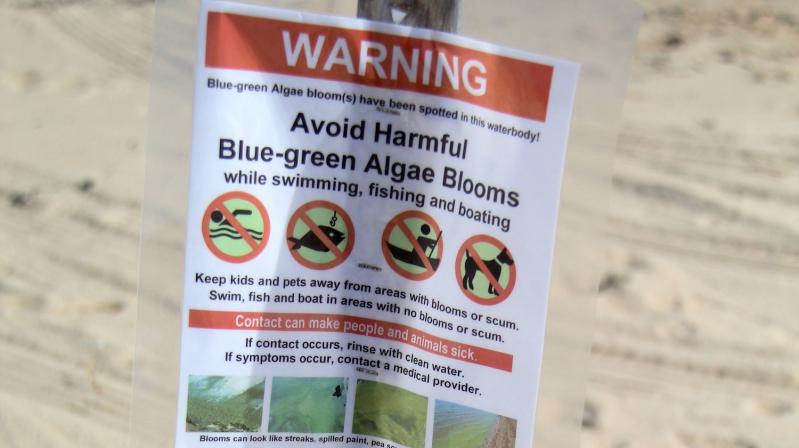The Suffolk County Legislature voted 10 to 7 along partisan lines to recess and close its hearing on Tuesday without acting to put the Suffolk County Water Quality Protection Act on the Nov. 7 ballot, which would have let voters decide whether or not the county sales tax should be increased by one-eighth of a cent to create a Water Quality Restoration Fund.
The act, which Assemblyman Fred W. Thiele Jr. said in April would generate around $60 million per year and as much as $100 million closer to 2060, would also have extended through 2060 an existing 0.25-percent tax that funds the county’s drinking water protection program and is to expire in 2030. Separate proposed legislation would have established a countywide sewer district.
Money raised from the county sales tax increase would have been used for water quality improvement projects including the installation of nitrogen-removing septic systems to replace old and failing septic systems and cesspools, or for creating, expanding, or upgrading wastewater treatment facilities. Along with $500 million in grants for clean water, New York State’s fiscal year 2024 budget authorized the county to create the Water Quality Restoration Fund, subject to referendum.
The Legislature’s often contentious, hourslong hearing came in the wake of a report that water quality in Long Island’s coastal zones has hit an all-time low, “with water bodies awash in fish kills, dead zones, toxic algal blooms, and fecal bacteria,” according to an advisory issued last Thursday by Christopher Gobler of Stony Brook University’s School of Marine and Atmospheric Sciences. That report is covered separately in this issue.
The East Hampton Town Board, which has incentivized property owners to replace conventional septic systems with new, nitrogen-removing models, passed a memorializing resolution in support of the ballot referendum at its meeting last Thursday. The board “supports a county-wide dedicated funding source to upgrade the 380,000 septic systems in the county that are potentially suffocating our bays and harbors, contaminating drinking water, and causing fish kills and harmful algal blooms,” the resolution states. The Water Quality Restoration Fund “could have a significant impact on efforts to protect and restore our waters,” it says. The town trustees also sent a letter in support of the act.
The Legislature had voted last month to recess a public hearing on the proposal, and Tuesday was the last opportunity for it to vote to put the proposal to voters in November, in order to meet a ballot referendum deadline of Friday, Aug. 4.
But “unfortunately, the majority of the Legislature has voted not to offer the voters the opportunity to vote on one of the most important bills of this decade,” Legislator Bridget Fleming of the Second District said after the hearing.
The majority voted to recess shortly after Dr. Gobler called the proposals “the most scientifically robust wastewater plan of any county in the nation,” one that was “considered and informed by so many agencies and institutions.”
“This century alone, our bays are actually warming at three times the global average,” he said. “But here’s the thing: Here in Suffolk County, we have no ability to control global climate change. There’s only one lever we can pull to address this, and that’s this plan here to reduce nitrogen loads, which we know will be effective.”
The hearing followed a flurry of activism that continued into the hearing itself. On July 12, Kevin McAllister, founder and president of the advocacy group Defend H2O, wrote to the Legislature to implore it to vote in support of the referendum to consider approval of the Water Quality Restoration Act, which he called “a strategic, science-based approach critical to advancing progressive sewage management in Suffolk County.”
“Water pollution from deficient wastewater treatment is a major threat to both the environment and the region’s clean-water-dependent economy,” he wrote. “The catastrophic algal bloom and fish kill that plagued the Forge River” — in Moriches and Mastic — “in the summer of 2005 brought much needed attention to the nexus between water quality in surface waters and sewage discharges from antiquated disposal systems currently serving our region.” While some progress has been made since then, he wrote, “broad-band transition to advanced treatment” with innovative/alternative systems “must happen for meaningful water quality improvements to be realized,” but is “unlikely to happen without substantive and sustainable funding support in place.”
Mr. McAllister addressed the Legislature in person on Tuesday, appealing to the body to “put aside any partisan actions that may be going on. This is about clean water.”
The Suffolk County Democratic Committee held a Tuesday morning press conference “to demand that the Republican-controlled Suffolk County Legislature” approve the referendum. There, Dave Calone, the party’s candidate for county executive, was among candidates and activists calling for the referendum’s approval. The Democrats then delivered a petition bearing that demand along with more than 1,000 signatures to Kevin McCaffrey, the presiding officer.
Ed Romaine, the Republican Party candidate for county executive, also supported putting the act on the general election ballot, according to the New York League of Conservation Voters, which urged residents to write or call their legislators, and to attend Tuesday’s hearing, to insist that they vote to put the act on the November ballot.
Dr. Gobler addressed the Legislature on Tuesday. “I’ve seen the collapse of our shellfisheries — 99-percent collapse in scallops and clams, loss of 90 percent of eelgrass and saltmarshes,” he said. “The science is crystal clear on this. The root cause is an overloading of nitrogen from land to sea, and that overload of nitrogen is coming from wastewater.”
There is also emerging research that nitrogen is also “a very serious threat to human health,” he said. “High levels of nitrate in drinking water have been epidemiologically linked to elevated rates of many types of cancers,” he said, citing research by the National Institutes of Health. “High levels of nitrate in our drinking water is also linked to birth defects and adverse birth outcomes,” and Suffolk residents are being exposed right now to these levels, he said. Further, property values are linked to water clarity, extending to properties more than a mile from coastal zones, he said.
Dr. Gobler and Mr. McAllister were among dozens who addressed the Legislature, most supporting the proposals. But legislators who voted against putting them to voters, Ms. Fleming said, “made arguments about distribution of funding, about the location of priorities, about sewers versus the alternative systems.” Their objections “are not based in fact,” she said. “What was understood by many in the Legislature was that the Republican and Conservative leaders felt that it wouldn’t be helpful to them to have it on the ballot in November. It does appear to me that there has to be a motivation like that, because every objection was addressed.”
“The objections they said out loud are very hard to believe,” she said, “because they were effectively disputed.”




